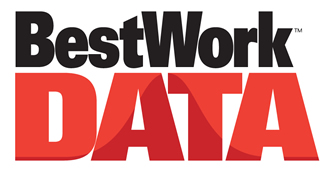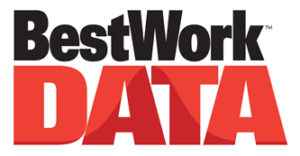Enhancing Training Effectiveness with DATA

 by: Chuck Russell, Chairman & Chief Knowledge Officer, BestWork DATA
by: Chuck Russell, Chairman & Chief Knowledge Officer, BestWork DATA
Trainers of all kinds candidly admit that in every training class one third of the class benefits tremendously from the training. Another third benefits, but not as much as the first third. The last third benefits little or not at all, and in some cases, has a negative effect on the overall training event. Seeking to solve this problem, trainers have devised countless tactics, gimmicks and strategies attempting to change the results. While this often added a variety of entertaining elements, there was little impact on the outcome. The concept of different styles of learning was put forward, and a number of interesting programs tried to apply these to training methods. This definitely helped some participants, but there was minimal success with the overall group, and the complexity of that approach limited its use.
BestWork DATA offers a much more practical understanding of the critical variables in any training program. Each participant plus the trainer, has hard-wired personality traits and cognitive abilities that form a solid foundation of behaviors and learning capabilities. Without seeing these clearly and recognizing the specific differences between the trainer and each trainee, competent and dedicated trainers will be on target with a third of the class, partly on target with another third and will miss with the last third. The good news is that when these differences are known, simple adjustments can dramatically improve any training’s effectiveness. The onus to change and adapt is always on the trainer and never on the trainee, however when both parties understand their challenges, positive results are possible.
The greatest challenges in training programs are found when the learning speeds of the trainer and the trainees are significantly different. This does not refer to intelligence or education, but to the speed at which an individual processes information. Many jobs require a slower processing speed to match the nature of the job, and that match is generally more important than the MBA or PhD that may also be required. Other jobs require fast processing speeds. When the trainer learns quickly, they present information quickly. If the trainee is not equally quick, they cannot capture all of the information. The lessons must be slowed down and some repetition may be necessary to ensure the level of learning. Conversely, if the trainee learns faster than the trainer, the trainee can become bored and not pay full attention. Additional questions and exercises may be introduced to engage faster learners.
Speed of learning is a major factor in the design of successful training programs. In fact, when training programs are designed without considering the speed of learning of both the trainer and the trainees, it can not only affect the effectiveness of the programs, but it can contribute to unwanted turnover.
Example A:
A leading soft drink company had three call centers experiencing extreme turnover. The job was desirable with good compensation and comfortable working conditions. Candidates were brought in for an intensive 2-day training program, which was followed by a test on what had been learned. Those candidates that passed the test were hired. The intensity of the training and the amount of information that needed to be acquired in a relatively short period of time meant that only those candidates who learned quickly could pass the test. Therefore, candidates with a fast learning speed were hired into a job that consisted of answering inbound calls when a restaurant ran out of soft drink syrup and dispatching more syrup. The new employees quickly learned that this was the extent of the job and virtually all of them left within weeks. The only candidates that could get the job were candidates that were poor matches for the job. The solution had two parts:
- The company used DATA to identify candidates who learned slowly because they can master routine jobs.
- The training program was extended, allowing for a slower pace of learning.
Refresher training pieces were added for the first few months of a new hires. The turnover rate dropped 30-40% across the three centers.
Example B:
A sales organization with 300 salespeople had a turnover rate of over 200%. They were hiring about as fast as employees were leaving. There were two primary causes:
- The first was solved with BestWork DATA, screening out candidates that lacked the hard-wired strengths and abilities for the job.
- The second cause of turnover was more serious as it affected the candidates who could do the job. New hires were trained in classes with well designed programs preparing them for the jobs. The trainer was experienced and had a track record of training corporate executives. The problem was the difference in learning speeds between the trainer and the trainees. The trainer learned extremely fast, in the top 10% of the population, which was perfect for the executives, most of whom who also learned quickly. Unfortunately, trainees that matched this job were in the lower half of the population in terms of their learning speed. The burden is always on the trainer to adjust to their students, however the gap in this case was huge. Try as she might, the trainer still presented the information too fast for the class. Therefore, new employees began their new job lacking confidence and often uncertain of how to do things. This was an impossible situation when a new employee is trying so hard to make a strong impression on their boss. Either they left because of this or their performance was not adequate because of the training issues. Major changes were necessary to correct this.
The first step for enhancing training effectiveness is to ensure that each trainee has the hard-wired strengths and abilities needed to be successful in the job. Next, identify any differences in speed of learning between the trainer and the trainees using BestWork DATA. That enables the development of strategies to
bridge the gaps and to ensure a successful program.
Example C:
PRE-TRAINING SNAPSHOT #1 illustrates the significant differences between the trainer and the trainee. A gap of one box between the two people indicates an area that requires additional focus and energy to bridge. This does not mean it cannot be done, but it does mean that specific actions must be taken for the training to be effective. This may require extending the training time, providing additional resources such as video refreshers, hands on demonstrations or other techniques. This example is extreme but it is not uncommon in some industries.
PRE-TRAINING SNAPSHOT #2 illustrates a very different situation. In this example, the trainer is almost an exact match to the trainee. Communication will be easy. They share the same speed of learning and a similar need for details. Both are open to new ideas and both can handle complex and conceptual
information. The trainee will also ask questions when needed. This is also an extreme example, although not uncommon. Usually, one or two areas require attention and adjustment, but that is not difficult when the gaps are clearly seen.
PRE-TRAINING SNAPSHOT #2
Training is one of the most important elements contributing to the success or struggles of a company. It is often one of the most expensive. The digital world provides access to almost any kind of training. The key to using those resources effectively is understanding the learning capabilities of the people being training. BestWork DATA is a powerful tool for unlocking the potential of each person and opening the door to incredible operational excellence.
*******
About the author: Chuck Russell is a thought leader on applying behavioral data to business, educational and social challenges. For over 25 years, he has worked with companies of all kinds to optimize their talent acquisition and talent management practices with behavioral data. He has used that experience to design hundreds of applications enabling anyone to use information that previously required expert interpretation or specialized training. He is an international speaker on behavioral data analytics. His most recent book is No Bad Hires, Bad Hires Are Now Optional.


